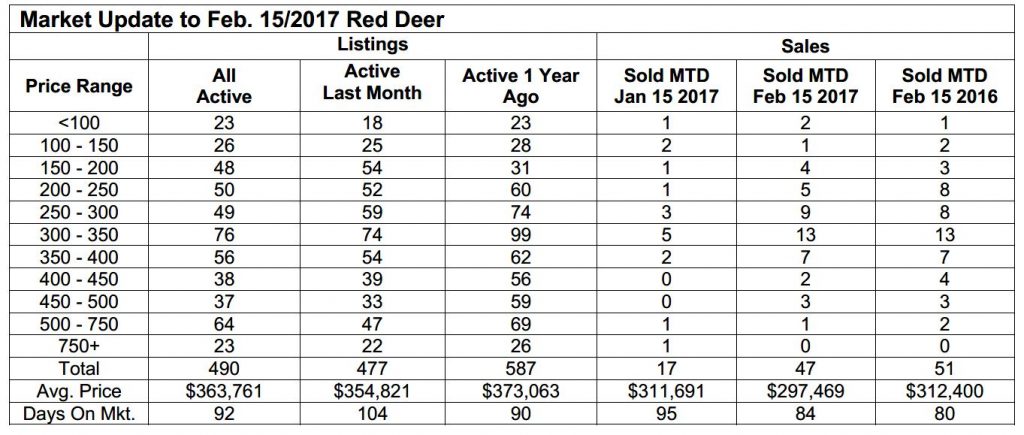February 15, 2017 – Market Update
February was off to a much better start than January in most of the seven central Alberta markets we track. Sales were as good or better than the first two weeks of last month. The number of active listings is up slightly in most of those markets, but not enough to be concerning.
Consumer confidence is certainly better up with oil prices staying above $50US and the news that some people are going back to work. We are seeing more oil company vehicles on the road and there is a sense that the economy is finally starting to turn. That is translating into more sales and listing activity.
The real estate market always lags behind the economy, usually by a year or two. We are at the very beginning of a recovery and we believe it’s too early to see prices moving up. If things continue to improve and the supply of homes doesn’t get too high, prices should hold where they are. The housing market is still being impacted by the mortgage rule changes that make it harder for buyers to qualify, which will temper the market somewhat.
Alberta Sees a Surge in Population – ATB Economics
The topic of immigration has been all over the news. For Alberta, immigration has helped Calgary and Edmonton become the fastest growing cities in the nation. According to 2016 census data released by Statistics Canada, Calgary remains Canada’s fastest-growing city, even amid the current economic conditions. Calgary’s metropolitan area grew 14.6 per cent between 2011 and 2016. That follows 12.6 per cent growth recorded from 2006 to 2011. Additionally, Calgary overtook Ottawa-Gatineau as Canada’s fourth-largest metro area.
Edmonton’s metropolitan area ranks as the second-fastest growing area in the nation. Alberta’s capital city grew 13.9 per cent during this census period, compared with 12.1 per cent during the last census. Trends are starting to suggest Edmonton will outgrow the rest of the province’s cities within the next five years and could become the fifth largest CMA. At 11.6 per cent, Alberta continued to have the highest growth rate of all the provinces, up from 10.8 per cent in 2011 and nearly seven per cent higher than the national average.
Statistics Canada notes that in the coming years, population growth in Canada is projected to be increasingly linked to migratory increase rather than natural increase, mainly because of low fertility and an aging population. Between 2011 and 2016, about two-thirds of Canada’s population growth was the result of migratory increases (the difference between the number of immigrants and emigrants).
The increase in immigration promises good news for Alberta, especially the construction sector. Even though Alberta’s energy industry isn’t expected to grow like it did between 2010 and 2014, increased immigration should at least keep Alberta’s homebuilders and construction companies working hard in the coming years.

